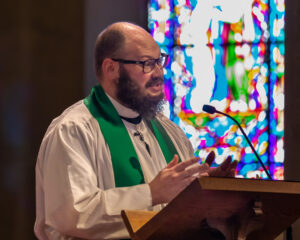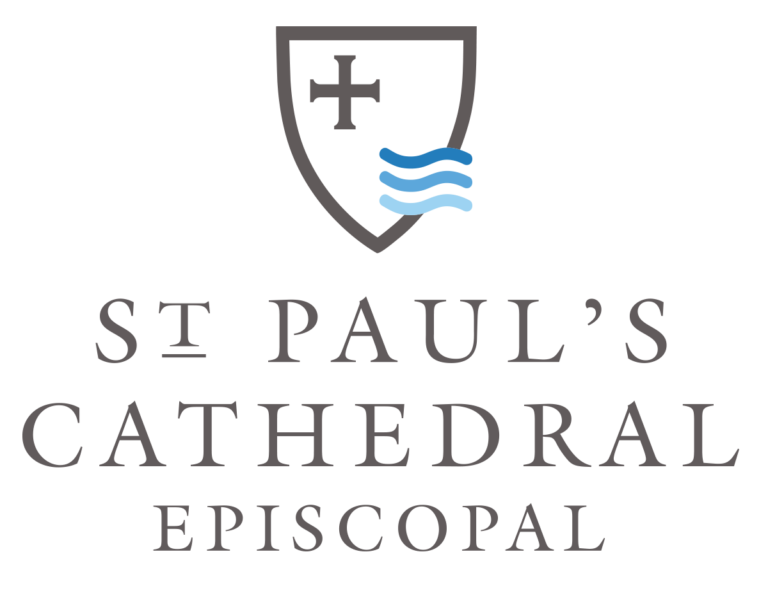Rev.Cn.Richard Hogue
One could be forgiven for confusing today’s Gospel for a vignette of Charles Dickens’ A Christmas Carol. A couple of spirits show up, a person is briefly but profoundly transformed, confusing the daylights out of everyone present, and then life goes on. If anything of this sort happened to me, I would wonder, like Scrooge, what I ate and what medicinal substances got slipped in, because this whole thing is very trippy. If there is a moment to be seized in Jesus’ life for 60s style counter-cultural purposes, this is story is it, and it is fair to wonder what the witnesses of all this were on.
We call this story “The Transfiguration,” but for me the better word for it is “revelation.” Transfiguration implies something changed, but Jesus reveals what was always there, disclosing his divinity in a physical way few get to see. It is terrifying and captivating. Peter, like a lighthouse keeper watching colossal waves crash against jagged rocks, wishes to remain near the sublime, witnessing unspeakable power unleash itself. Who can blame him? The palpable imminence was clearly overwhelming. Awe, or what we often translate from Hebrew scripture as fear, is among the most captivating human emotions, and it is inspired by both the beautiful and the dreadfully sublime.
This revelation is brief, like so many are, defying the urge Peter feels to dwell in it. It is more like a rogue wave, or the doom inducing flash of a mushroom cloud, something one can never forget, stymying and dreadful. But this revelation, this “apocalypse” in Greek, terrifying like the dawn and deepest night, comes and goes without destruction. However, Peter’s desire to build something, anything, even if he is unaware of the words he is uttering, marks a moment where something was destroyed. Otherwise, why would he want to build, or perhaps to put a
finer point on it, why does he desire to rebuild? It is as if he watched a building tumble to pieces during an earthquake, and now he wants to use the pieces to put something back together. What makes this story “the Transfiguration” rather than simply Jesus’ revelation? What really becomes transfigured, I believe, are the witnesses themselves, and their understanding of Jesus.
What begins to crumble is the sense that any of them really know what’s going on. Just as Peter stammers through words he doesn’t even know he is saying, the present disciples silently stumble through their thoughts and lives following their transfiguration. “And they kept silent and in those days told no one any of the things they had seen.” It’s almost as if they’ve authenticated a Lovecraftian horror about the universe. They are so haunted by the truth that they wordlessly walk along with Jesus, this being of unmitigated and immeasurable power. Having been exposed to bewildering confirmation of the sublime, they sublimate to this reality through forbidding and eerie silence.
Moses, Elijah, the cloud, and the voice from the cloud, all stoke such holy and awe-filled fear that they are transfigured in ways they and we may never fully understand. So why did this band of shell-shocked disciples continue to follow Jesus after having their pants scared off? There is a quote from the Anglo-Irish philosopher Edmund Burke, from his book on the Sublime and Beautiful, that can be helpful here. The quote begins:
It were endless to enumerate all the passages, both in the sacred and profane writers, which establish the general sentiment of mankind, concerning the inseparable union of a sacred and reverential awe, with our ideas of the divinity. Hence the common maxim, Primus in orbe deos fecit timor [fear first made gods in the world]. This maxim may be, as I believe it is, false with regard to the origin of religion. The maker of the maxim saw how inseparable these ideas were, without considering that the notion of some great power must be always precedent to our dread of it. But this dread must necessarily follow the idea of such a power, when it is once excited in the mind. It is on this principle that true religion has, and must have, so large a mixture of salutary fear; and that false religions have generally nothing else but fear to support them.[1] End quote.
These false religions, be they those of empires, autocrats, con-artists, equivocators, demons, or the deceitful, become transparently powerless when one has gazed upon Jesus’ perplexing infinity, like paper tigers back lit by a single brilliant star. Their use of fear obscures the truth of their powerlessness. This moment of transfiguration of the disciples compels them to follow this lowly vagabond, a carpenter-turned-rabbi, from valleys to mountain tops, from exorcisms to encounters with empires, from community to the cross and back again, precisely because they have seen something incomprehensible, and yet felt it as close and real as the beating of their own hearts.
That is the truth at the heart of this baffling vignette, that the God of the unmeasurable and inscrutable universe chooses to dwell with us. The irony of Peter wanting to remain on that mountaintop is laughably clear in view of God’s choice to be present with us in this world through the life and body of Jesus. The sublime and the beautiful are wrapped in the same fabric of reality as you and me, flesh and bone, as if a mobius strip could be made into a cube, or an Escher painting could be built and made real, the Holy Trinity revealed to human eyes. The illimitable God of mystery and wonder chose to disclose the power of the universe to us mortals and then transfigure our lives and our world through God’s presence, through love and joy, and holy, unspeakable awe. That transfiguring truth extends to us right here, right now! May God’s transfiguring energy transform and revivify each of us, and may we contemplate and live out that same mystery as a blessing.
Amen.
[1] Burke, Edmund, A Philosophical Enquiry into the Origin of Our Ideas of the Sublime and Beautiful, https://pressbooks.bccampus.ca/classicreadings/chapter/edmund-burke-on-the-sublime/, accessed August 3rd, 2023.

